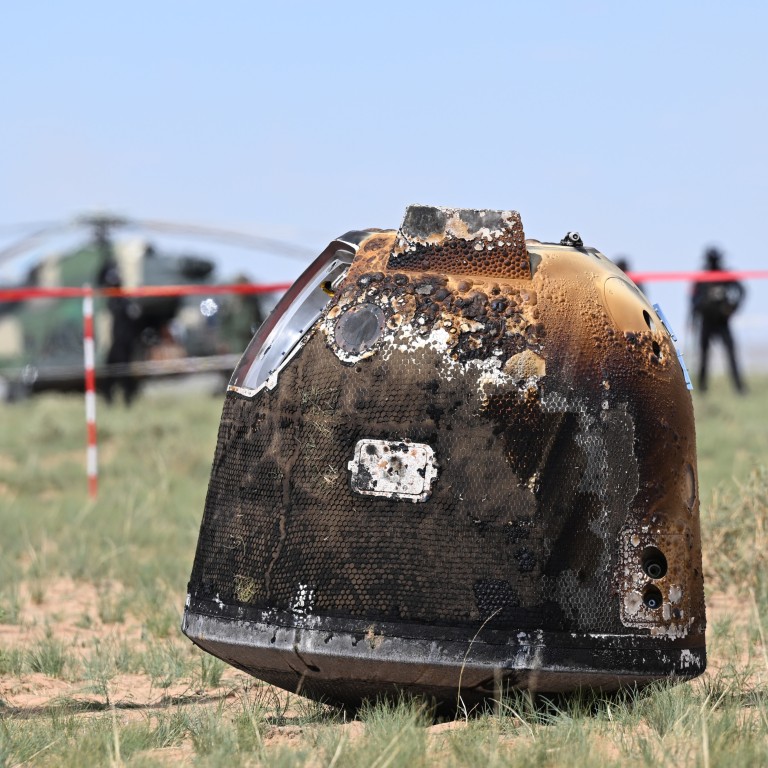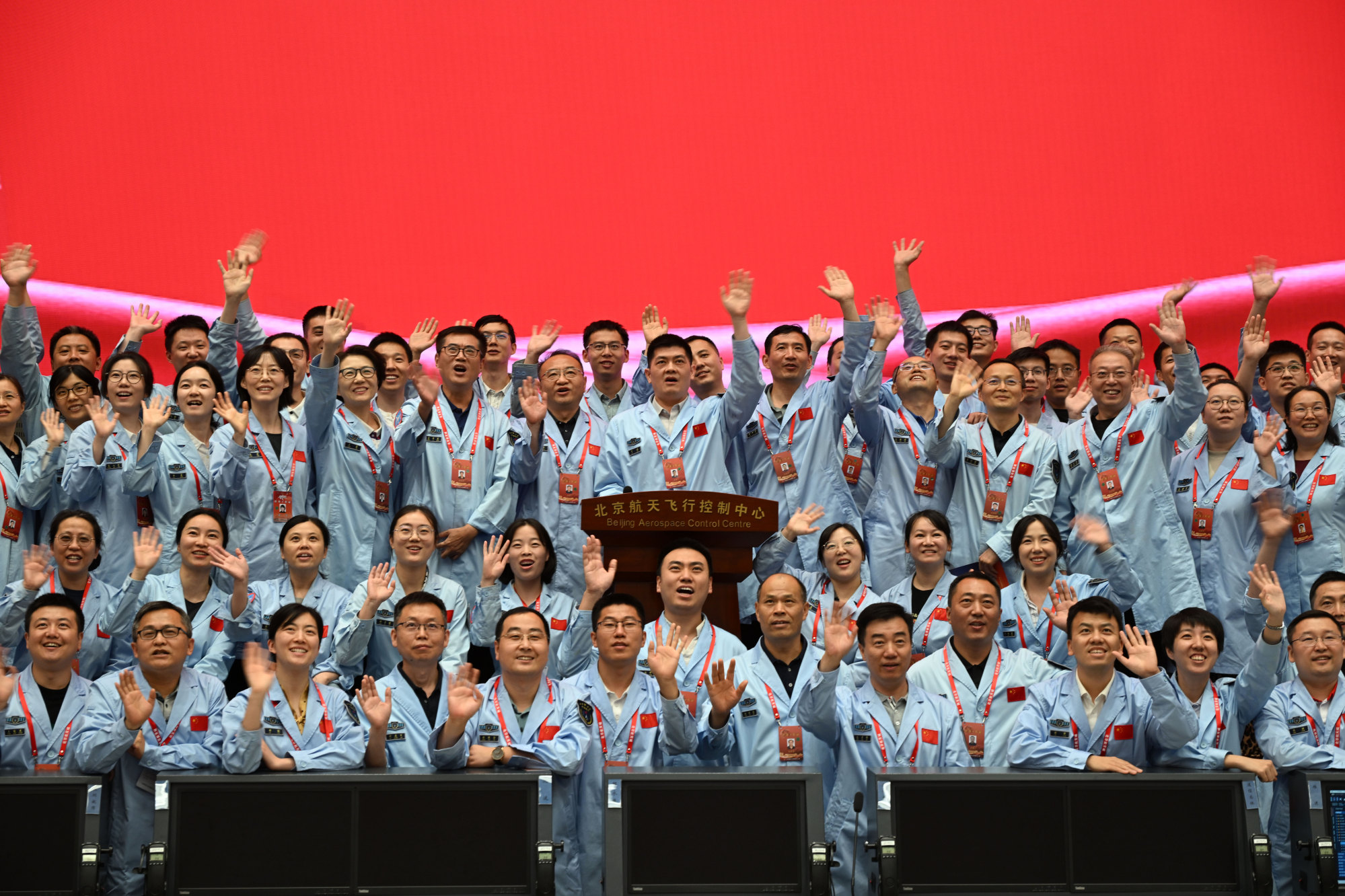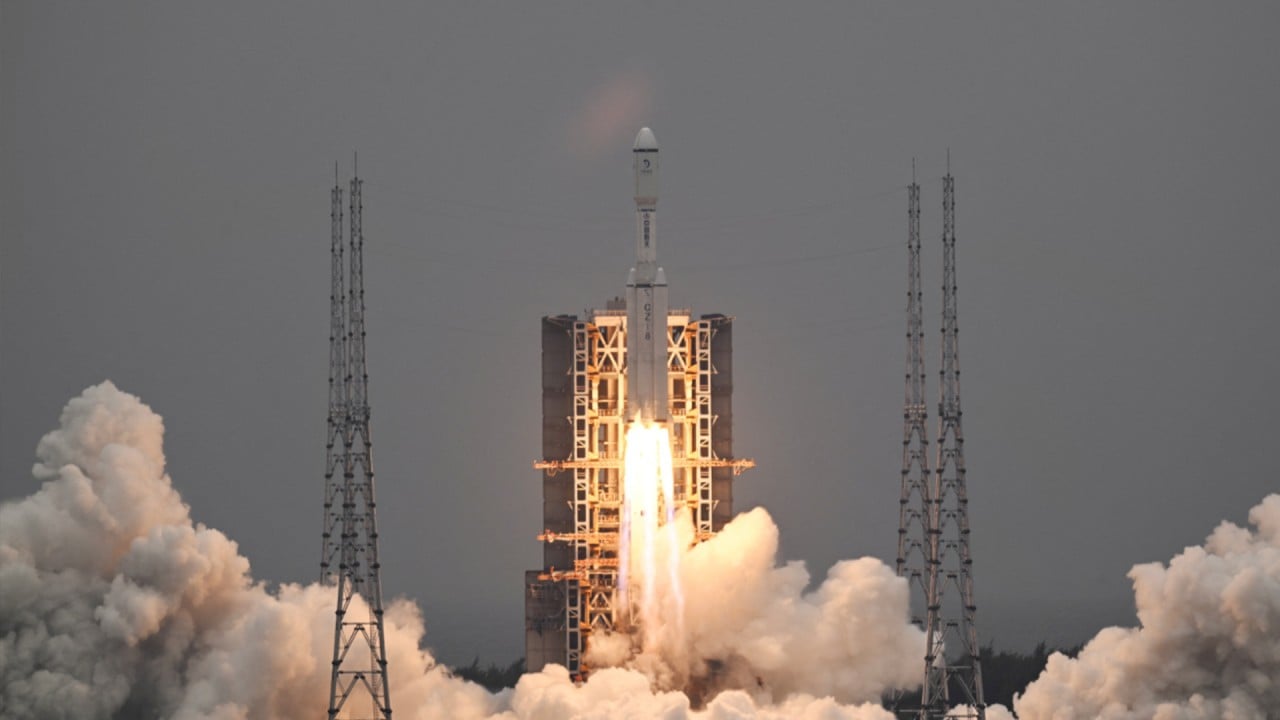
China’s Chang’e-6 moon mission returns to Earth with historic lunar far side cargo
- Re-entry capsule touches down safely in Inner Mongolia with the first samples ever retrieved from the moon’s rough, mysterious side
“Your outstanding contributions will be forever remembered by the motherland and the people,” he said in a written address to the team, shortly after the re-entry capsule touched down in the Siziwang Banner grasslands of the Inner Mongolia autonomous region.
The re-entry and landing procedure started at around 1.20pm when mission controllers uploaded high-precision navigation data to the orbiter-re-entry capsule combination, after which the capsule unlocked and separated around 5,000km (3,110 miles) above the southern Atlantic Ocean.
The parachute deployed as the module reached the last 10km (6 miles) of its descent and landed smoothly at its predetermined destination, with recovery personnel arriving shortly after in helicopters and ground vehicles.
CNSA director Zhang Kejian said the Chang’e-6 mission “has achieved complete success”.
“According to the monitoring of the Beijing aerospace control centre, the re-entry module of the Chang’e 6 mission landed successfully at Siziwang Banner in the designated area,” he said.

After the recovery team has completed processing the module on site, it will be airlifted to Beijing, where it will be opened and the samples removed for analysis and storage, the administration said.
In his statement, Xi said Chang’e-6 had achieved “the first lunar sampling and return mission on the far side of the moon in human history... another landmark achievement of China’s effort to build itself into a powerful country in aerospace and science and technology”.
Over the past 20 years, those involved in the lunar exploration project had made “remarkable achievements that have attracted worldwide attention, blazing a high-quality and cost-effective path for lunar exploration,” he added.
Xi said he hopes that those involved in aerospace projects will continue to “strengthen international exchanges and cooperation”.
According to Zongyu Yue, a geologist at the Chinese Academy of Sciences, the samples are expected to answer “one of the most fundamental questions in lunar research – what geologic activity is responsible for the differences between the two sides”.
Yue, first author of a paper published yesterday by The Innovation, a Cell Press journal, about the lunar landing site and its implications for further study, said his greatest hope is that the Chang’e-6 samples contain some “impact melts”.
These are fragments that would have been generated when smaller bodies crashed into the moon that could “provide crucial constraints on the early impact flux of the moon”, he said.
“Once this information is obtained, it will not only help clarify the role of early lunar meteorite impacts on the moon’s evolution, but [will] also be of great significance in analysing the early impact history of the inner solar system.”
Namrata Goswami, an author and space policy expert at the Arizona State University in the US, said the mission’s success means that “China has clinched and perfected its lunar orbit insertion, landing, autonomous sample collection and return capabilities”.
According to Brad Joliff, a planetary scientist from Washington University in St. Louis, the “simply spectacular” Chang’e-6 mission “worked like clockwork”.
The Chang’e-6 spacecraft blasted off from the Wenchang spaceport on southern China’s Hainan island on May 3, reaching the moon five days later. After waiting in orbit, the mission touched down in a preselected area within the South Pole-Aitken (SPA) basin earlier this month.
After 48 hours of intense surface sampling with a drill and a robotic arm, the mission took off from the moon, docked with the re-entry module in lunar orbit, and headed back to Earth on June 20.
According to Joliff, the Chang’e-6 samples represent the first volcanic rocks to be brought back from the lunar far side and are likely to provide key clues as to why the moon’s two faces are so different.
Qian Yuqi, a postdoctoral researcher with the University of Hong Kong, said that while more than 70 per cent of the moon’s near side is covered with dark volcanic rocks, its far side only has about 20-30 per cent coverage.
Scientists have proposed various theories to explain this dichotomy but these have never been tested. Previous moon samples – including those from the US, the Soviet Union and China – were all collected from the near side.
Qian, who uses remote sensing data to study the moon and other planets, expects the Chang’e-6 samples to be older and more complex in their composition than the volcanic rocks collected by the Chang’e-5 mission in 2020.
The samples from the moon’s far side are expected to be around 3 billion years old, compared to the materials from the more familiar lunar surface facing Earth, which dated to about 2 billion years ago, he said.
According to Qian, the Chang’e-6 sampling site is also likely to contain more materials which were originally formed in neighbouring areas or deep below the lunar surface.
These non-local samples would have been either ejected or exposed at the sampling site because of asteroid impacts, making them both challenging and intriguing to analyse, he said.
Qian said that his team will be eager to apply for the chance to study the newly returned samples once they are processed and ready for loaning from the CNSA, probably by the end of this year or in early 2025.
The Chang’e-7 and Chang’e-8 missions are slated to fly in 2026 and 2028, respectively in search of water ice.
“The fact that China has been meeting its timelines with existing missions means that Chang’e-7, Chang’e-8, and the 2030 human mission to the moon timelines are likely to be met,” Goswami said.




